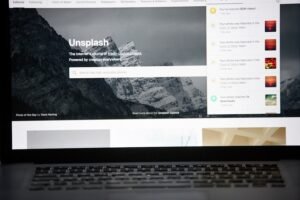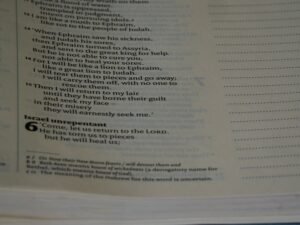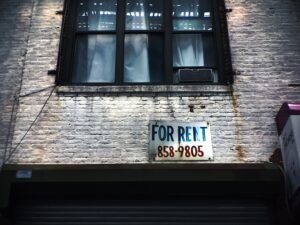In today’s digital age, having a well-designed website is crucial for any business, and the vacation rental industry is no exception. A website serves as the online storefront for your vacation rental property, and it is often the first point of contact for potential guests. A well-designed website can make a lasting impression and attract more guests, ultimately leading to increased bookings and revenue.
A poorly designed website, on the other hand, can turn potential guests away and hinder your business’s growth. It can be frustrating for users to navigate a website that is cluttered, difficult to use, or lacks important information. A well-designed website, on the other hand, can provide a seamless user experience and make it easy for guests to find the information they need and make a booking.
Understanding your target audience: Who are your guests and what do they want?
Before designing your vacation rental website, it is important to understand who your target audience is and what they are looking for in a vacation rental property. Are they families with children, couples looking for a romantic getaway, or business travelers? Understanding your target audience will help you tailor your website to meet their needs and preferences.
For example, if your target audience is families with children, you may want to highlight family-friendly amenities such as a pool or playground on your website. You may also want to include information about nearby attractions and activities that are suitable for children. On the other hand, if your target audience is couples looking for a romantic getaway, you may want to focus on amenities such as a private balcony or hot tub.
Choosing the right color scheme: How to create a mood that matches your vacation destination
The color scheme of your website plays a crucial role in creating a mood that matches your vacation destination. Different colors evoke different emotions and can have a significant impact on how users perceive your website and property.
For example, if your vacation rental property is located in a tropical beach destination, you may want to use a color scheme that includes shades of blue and green to create a sense of relaxation and tranquility. On the other hand, if your property is located in a bustling city, you may want to use a color scheme that includes shades of gray and black to create a sense of sophistication and urbanity.
Using high-quality images: Tips for selecting and displaying photos that showcase your property
High-quality images are essential for showcasing your vacation rental property and attracting potential guests. When selecting photos for your website, it is important to choose images that accurately represent your property and highlight its unique features.
Avoid using generic stock photos that do not accurately represent your property. Instead, invest in professional photography or take high-quality photos yourself. Make sure to capture the best angles and lighting to showcase the unique features of your property.
When displaying photos on your website, consider using a gallery or slideshow format to allow users to easily browse through the images. Include captions or descriptions for each photo to provide additional information about the property.
Crafting compelling copy: Writing website content that sells the experience, not just the amenities
While it is important to provide information about the amenities and features of your vacation rental property, it is equally important to sell the experience that guests will have when staying at your property. This can be done through compelling copywriting that tells a story and evokes emotions.
Instead of simply listing the amenities, describe how guests will feel when they relax by the pool or enjoy a sunset view from the balcony. Use descriptive language and paint a picture of what it would be like to stay at your property.
In addition to describing the experience, make sure to include practical information such as the location, nearby attractions, and any special offers or discounts. This will help potential guests make an informed decision and increase their likelihood of booking.
Navigating the user experience: Designing a website that’s easy to use and encourages exploration
The user experience is a critical aspect of website design, especially for vacation rental websites. A website that is difficult to navigate or lacks important information can frustrate users and lead to lost bookings.
To create a user-friendly website, make sure to have clear navigation menus and intuitive page layouts. Include a search function that allows users to easily find properties based on their preferences such as location, number of bedrooms, or amenities.
Encourage exploration by providing links to nearby attractions, restaurants, and activities. This will not only help users plan their trip but also showcase the value of staying at your property.
Incorporating social proof: How to use testimonials, reviews, and social media to build trust with potential guests
Social proof is a powerful tool for building trust with potential guests. Testimonials and reviews from previous guests can provide reassurance and credibility. Include testimonials on your website from satisfied guests who have stayed at your property.
In addition to testimonials, encourage guests to leave reviews on popular review websites such as TripAdvisor or Yelp. Display these reviews on your website to showcase the positive experiences of previous guests.
Social media can also be a valuable tool for building trust and credibility. Include links to your social media profiles on your website and regularly update them with photos and updates about your property.
Showcasing your amenities: Highlighting the unique features that make your property stand out
One of the key selling points of a vacation rental property is its amenities. Highlighting the unique features that make your property stand out can help attract more guests and increase bookings.
Create a dedicated page on your website that showcases the amenities of your property. Include photos, descriptions, and any additional information such as operating hours or fees.
Consider creating packages or special offers that include specific amenities. For example, if you have a property with a private pool, you could offer a “Poolside Retreat” package that includes poolside loungers, towels, and a complimentary bottle of champagne.
Creating a sense of urgency: Using scarcity and time-limited offers to encourage bookings
Creating a sense of urgency can be an effective strategy for encouraging bookings. By using scarcity and time-limited offers, you can create a sense of urgency and motivate potential guests to make a booking.
For example, you could offer a limited-time discount or promotion for bookings made within a certain timeframe. You could also highlight the availability of your property by showing how many bookings have already been made or how many rooms are left.
Another strategy is to offer exclusive deals or discounts to guests who sign up for your newsletter or follow you on social media. This not only creates a sense of urgency but also helps build your email list and social media following.
Optimizing for search engines: Tips for improving your website’s visibility and driving more traffic
Search engine optimization (SEO) is crucial for improving your website’s visibility and driving more traffic. By optimizing your website for search engines, you can increase your chances of appearing in search results when potential guests are looking for vacation rental properties.
Some tips for optimizing your website for search engines include:
– Conducting keyword research to identify the most relevant keywords for your target audience
– Including these keywords in your website’s meta tags, headings, and content
– Creating high-quality, informative content that is relevant to your target audience
– Building backlinks from reputable websites in the vacation rental industry
The importance of ongoing website maintenance and the impact of design on your vacation rental business.
In conclusion, having a well-designed vacation rental website is crucial for attracting more guests and increasing bookings. By understanding your target audience, choosing the right color scheme, using high-quality images, crafting compelling copy, navigating the user experience, incorporating social proof, showcasing your amenities, creating a sense of urgency, and optimizing for search engines, you can create a website that stands out from the competition and drives more bookings.
However, it is important to note that website design is an ongoing process. Regularly updating and maintaining your website is crucial for keeping it fresh and relevant. Monitor user feedback and analytics to identify areas for improvement and make necessary updates.
Remember, your website is the online representation of your vacation rental property. A well-designed website can make a lasting impression and attract more guests, ultimately leading to increased bookings and revenue. Take the time to invest in a well-designed website, and you will reap the rewards in the long run.






